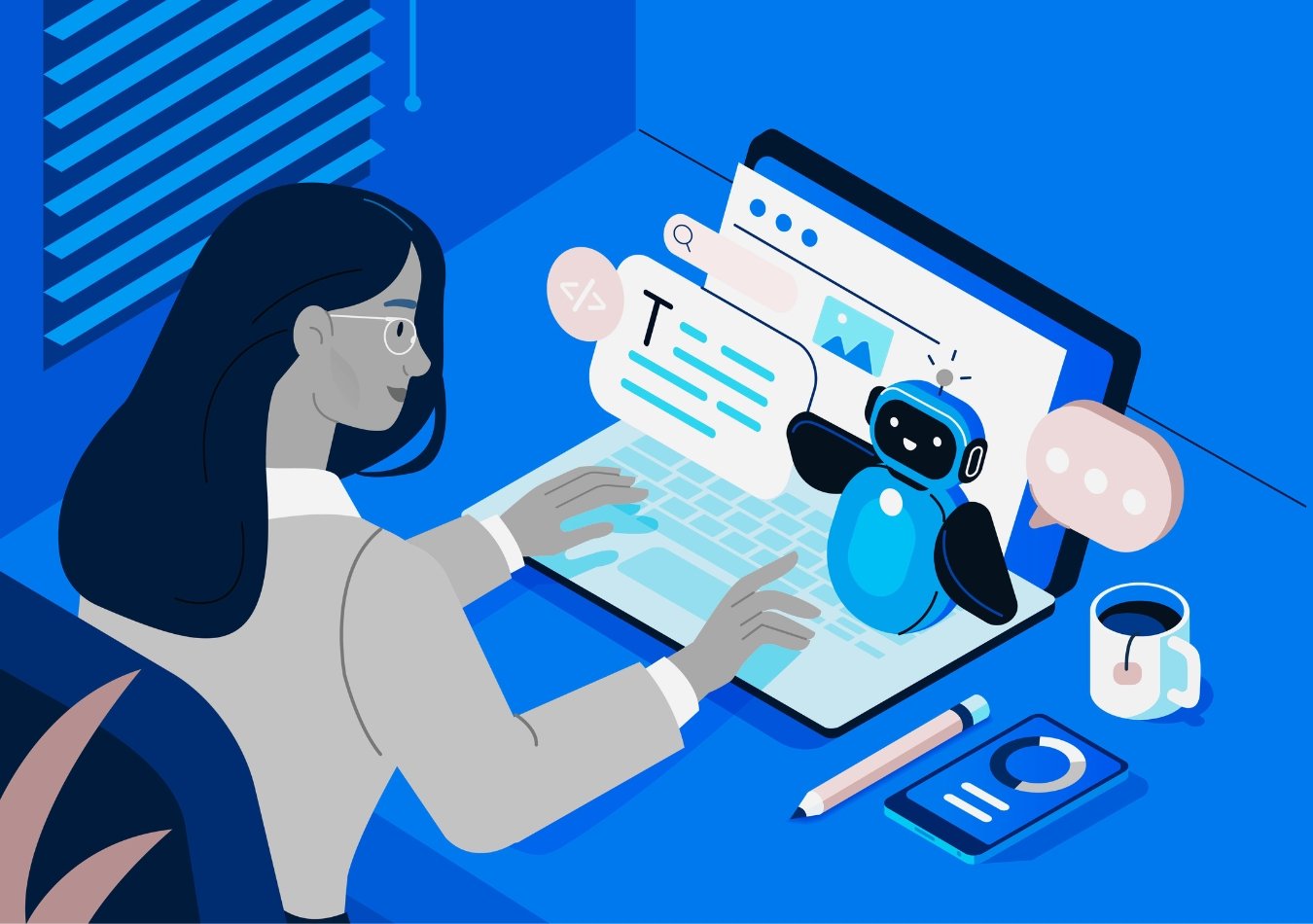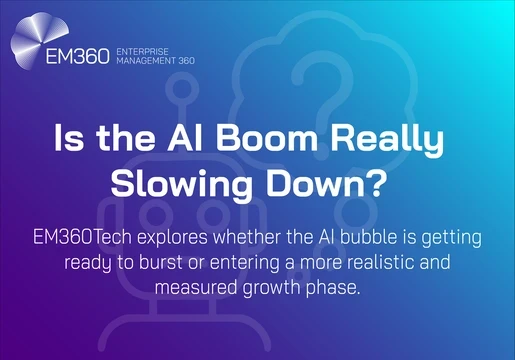Your first conversation with a large language model (LLM) like ChatGPT can be daunting. Not only do you need to know what to ask the chatbot, but also how to word it in a way it can understand to get the answer you’re looking for.
At the same the responses you receive can differ considerably depending on which chatbot you’re speaking with. If you ask ChatGPT and Google’s Gemini for the best way to get from London to New York, for instance, their answers are likely to be noticeably different and in entirely different styles. ChatGPT may give a better answer than Gemini. In others, the opposite might be true.
To get the best possible answer out of every prompt, many users have turned to prompt engineering to maximize the output of their preferred chatbot and customize it for their needs.
This article tells you everything you need to know about prompt engineering, including what it is and how it works and prompts you can use to make AI better.

What is a Prompt?
A prompt to a piece of text or instruction you give to a large language model to guide the model’s response. It often comes in the form of a natural language request, a question, or even creative prompts like poems or code snippets.
Prompts are your starting points for your interaction with the LLM. By crafting the prompt carefully, you can steer the LLM towards the type of response you want, whether it's a factual answer, a creative story, or a specific writing style.
Types of prompts
There are several different types of prompts used with LLMs, each suited for specific goals and offering varying levels of control over the LLM's output.
1. Zero-shot Prompts
Zero-shot prompts are where isers ask the LLM a question or give it a task directly without any additional context or information. This offers less control compared to few-shot prompts, but is faster than customising a prompt for a specific output.
Example: "Write a poem about a robot."
2. One-shot prompts
One-shot prompts provide a single instruction or example along with a question to nudge the LLM in a specific direction. This offers more control than zero-shot prompts and can lead to more accurate and meaningful responses.
Example: "Write a blog post in a formal tone about the future of artificial intelligence."
3. Few-Shot Prompts
With few-shot prompts, users provide a few examples or a series of short instructions for the LLM. This is useful for tasks where you want the LLM to mimic a certain style of format.
Example: "Write a social media post like [famous influencer] promoting a new product launch. Here are some key points to include..."
4. Chain-of-Thought Prompts
Break down complex tasks into smaller, step-by-step instructions. Encourage the LLM to show its reasoning process for improved transparency and potentially better results.
Example: "Step 1: Identify the main character's goal. Step 2: Describe a challenge they face. Step 3: Write a paragraph about how they overcome the challenge.”
5. Meta-Prompts
Meta-prompts are "prompts about prompts" that provide high-level instructions on how the LLM should approach future prompts. This is an advanced technique still under development but holds promise for fine-tuning LLM behaviour across various tasks.
Example: "When responding to prompts, prioritize factual accuracy and provide citations for sources."
What is prompt engineering?
Prompt engineering is the process of crafting a question or request for a large language model (LLM) to achieve a desired outcome. This can include structuring a question for in a specific way or using specific words or phases in a request to improve an AI chatbot’s accuracy and effectiveness at responding to your prompt.
LLMs require detailed instructions to create high-quality and relevant output. In prompt engineering, you choose the most appropriate formats, phrases, words, and symbols that guide the AI to interact with your users more meaningfully. Effective prompt engineering unlocks the full potential of AI models, allowing them to be more helpful and informative for various tasks.

Imagine you're giving instructions to a chef. A simple prompt might be "Make me a sandwich." But with prompt engineering, you could specify the type of bread, desired fillings, and even how you want it toasted. The more detailed and specific your prompt, the better the chef (or AI model) can understand your request and deliver the desired outcome.
By carefully crafting the prompt, you can guide the AI model to generate more relevant, informative, and creative outputs.
How does prompt engineering work?
Prompt engineering works by carefully crafting instructions for a Large Language Model (LLM) to nudge it towards generating the desired output.
First, It's important to have a basic grasp of the LLM's capabilities and limitations. You need to know what kind of information it's been trained on and what tasks it excels at to help you craft effective prompts.
For instance, if you’re using ChatGPT 3.5, you’ll need to keep in mind that the dataset it’s trained on dates back to 2021, so some information it provides may be inaccurate. This means you should engineer prompts based on recent events, as it simply won’t provide correct responses or may outright refuse to respond to your query.

Once you understand the information your LLM is capable of providing, you then need to think about what you want to achieve. Whether it’s a factual answer, a creative story, or a specific writing style, having a clear goal in mind allows you to tailor the prompt accordingly.
When it’s time to write your prompt, think about the wording and structure of your request so you can guide the LLM thought process. Chain-of-thought prompts with step-by-step instructions can be helpful for complex tasks, while zero or one-shot prompts are better for request requiring straightforward answers.
Your first attempt might not always be perfect. Analyze the LLM's output and see how it aligns with your goal, and refine your prompt based on the results. This process is key to successful prompt engineering.
Benefits of prompt engineering
1. More potential for LLMs
Well-designed prompts help you focus the LLM's vast knowledge on a specific task. This reduces the chances of irrelevant outputs and ensures the information you receive is accurate and directly addresses your needs.
Prompt engineering is an essential skill for getting the most out of your interactions with LLMs. By understanding how to craft effective prompts, you can unlock new functionalities and applications, pushing the boundaries of what LLMs can achieve.
2. More Control over Style and Format
By crafting specific prompts, you can guide the LLM towards generating text in a particular style or format. Whether you need a formal report, a creative poem, or a catchy social media post, prompt engineering allows you to tailor the output to your specific requirements.
3. Boosted Efficiency
LLMs can automate repetitive tasks or generate drafts significantly faster than humans. Effective prompt engineering allows you to provide clear instructions, minimizing the need for back-and-forth communication and revisions, leading to increased efficiency and productivity.
4. Better and more creative responses
LLMs can automate repetitive tasks or generate drafts significantly faster than humans. Effective prompt engineering allows you to provide clear instructions, minimizing the need for back-and-forth communication and revisions, leading to increased efficiency and productivity.
5. Reduce bias and misinformation
Carefully crafted prompts can mitigate potential AI bias present in the LLM's training data. By specifying desired information sources or emphasizing factual accuracy, you can help ensure the outputs are less prone to misinformation.
Examples of Prompt Engineering
Here are 5 powerful prompts for ChatGPT, each designed to showcase different functionalities and achieve specific goals:
1. Creative Story Starter:
In a world where [insert fantastical element], a young [profession] named [name] discovers a hidden [object] with the power to [ability]. However, this newfound power attracts the attention of [antagonist], who will stop at nothing to obtain it. Write a story about [character's name]'s journey to [goal] and the challenges they face along the way.
This prompt sets the stage for an imaginative story with clear elements for ChatGPT to build upon. It provides a world concept, protagonist details, a conflict, and a goal, allowing the AI to weave a narrative that incorporates these aspects.
2. Informative Blog Post in Specific Style:
Write a blog post in the style of a friendly tech explainer for a non-technical audience. The topic is [insert complex tech concept] and the goal is to explain its core functionalities and potential benefits in an engaging and easy-to-understand way.
This prompt specifies the desired format (blog post), target audience (non-technical), and topic (complex tech concept). This guides ChatGPT towards generating informative and approachable content suitable for a general audience.
3. Humorous Social Media Posts
Imagine you're a [social media platform] account for a [funny/quirky brand]. Create a witty and engaging post that uses a popular meme format (e.g., Drakeposting, One Does Not Simply) to promote their latest product launch [product name].
This prompt injects humor and a specific brand voice into the task. Highlighting a popular meme format provides a creative springboard for ChatGPT to craft a humorous social media post relevant to the brand and product.
4. Code Completion with Specific Functionality
You are given the following Python code snippet:
Complete the calculate_area function using Python code to accurately calculate the area of a rectangle based on the provided length and width arguments.
This prompt provides a clear task for ChatGPT: completing a Python function with a specific purpose. It includes an example for reference, ensuring the generated code aligns with the desired functionality.
5. Business Email with Formal Tone
Draft a formal email on behalf of [your company name] to a potential client [client name]. The email's purpose is to introduce your company's services in [your field] and highlight how they can specifically benefit the client's business needs. Briefly mention a recent success story with a similar client to demonstrate your expertise.
This prompt outlines the email's purpose, sender, recipient, and desired content. It provides a framework for ChatGPT to generate a professional and persuasive email tailored towards acquiring new business.
Final Thoughts
Prompt engineering isn't a magic trick, but it is a powerful tool. The more you understand it, the more you can leverage the capabilities of these language models.
Don't expect perfect results right away. Experiment with different prompts and see what works best for you and the specific LLM you're using.
The field of AI and LLMs is constantly evolving. Stay curious and keep learning about new prompt techniques to get the most out of this exciting technology.







Comments ( 0 )